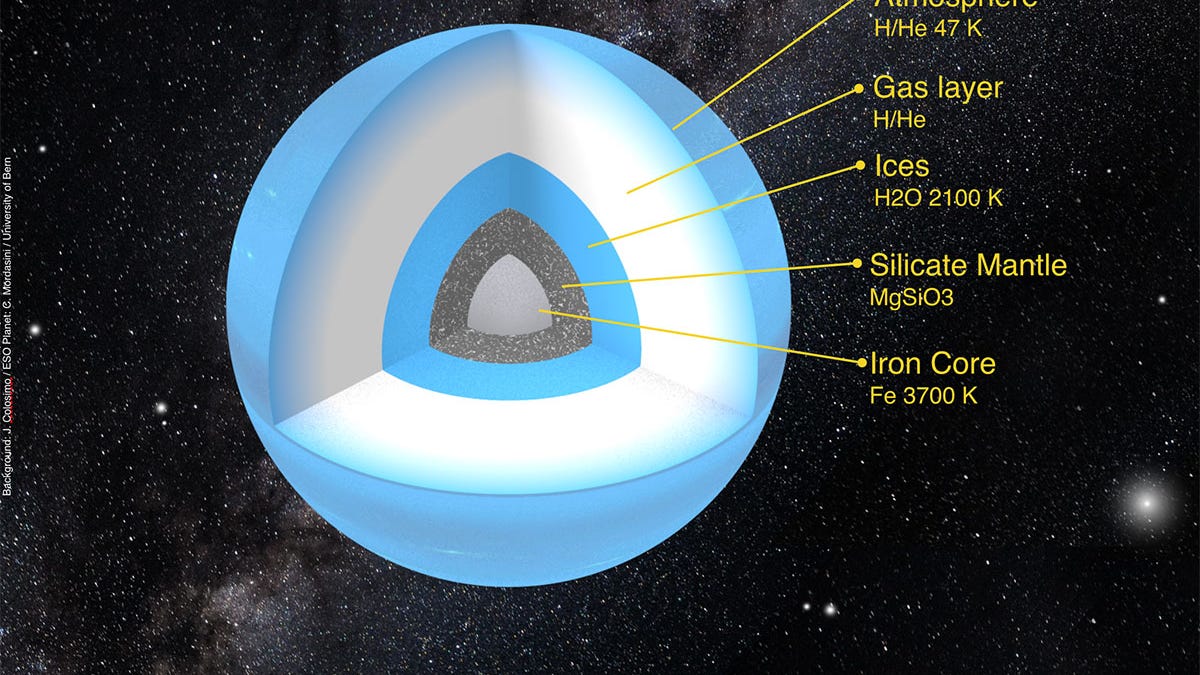Is this what Planet Nine looks like?
A team of astrophysicists has created a model of the imagined size, shape and composition of the possible ninth planet in the solar system.
Planet Nine may or may not exist. The evidence for its existence is incomplete, based on behaviour observed in outer solar system objects that seems to indicate the gravitational effects of planetary orbit.
If it does exist, it's pretty big. The evidence indicates that it would be around 10 times more massive than Earth. The California University of Technology team that gathered the evidence for Planet Nine proposed that it could be a gas giant, like Neptune or Jupiter.
Now a team of astrophysicists from the University of Bern in Switzerland has used the available evidence to model what sort of planet may be on its weird orbit in the outer reaches of our solar system. Astrophysics professor Cristoph Mordasini and Ph.D. student Esther Linder are experts at planetary modelling, though their efforts usually focus on exoplanetary formation.
The parameters used included the location of the orbit, which would indicate a very cold planet, and the observed effects on the other objects, which helped calculate its size. They also factored in the fact that we've not actually laid eyes on the planet. These helped them figure out how Planet Nine might have evolved in the 4.6 billion years of the solar system's life.
Their model reflects a very cold gas giant. It would be, as previously ascertained by the Caltech team, around 10 times Earth's mass, with a radius 3.7 times that of Earth's. Its temperature would be minus 226 degrees Celsius, or 47 Kelvin. Any radiation it emits would be dominated by its cooling core, which means it would be much brighter in infrared than visible light. This could help provide some clues to finding Planet Nine.
As to why it hasn't been found yet, previous sky surveys only have a very small chance of spotting an object so far away if it is less than 20 Earth masses. NASA's Wide-field Infrared Survey Explorer could pick up such a planet, but only if it was 50 Earth masses or larger.
"This puts an interesting upper mass limit for the planet," Linder said.
We're going to have to wait some time to see if Mordasini and Linder are correct. Either a dedicated sky survey or new instruments, such as the large telescopes currently under construction, will be needed to find Planet Nine.
Also, raise your hand if you think it should be called Planet IX.


